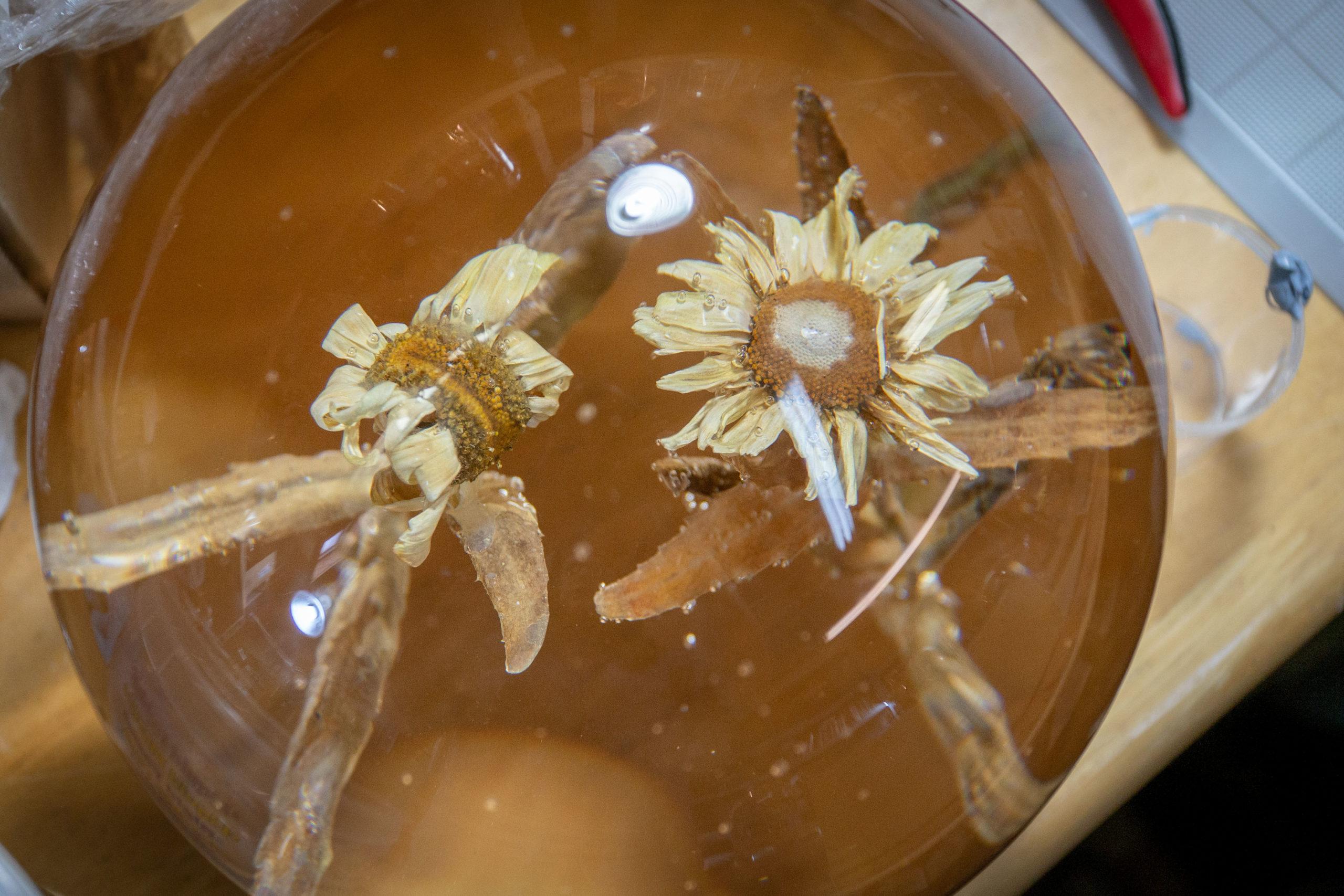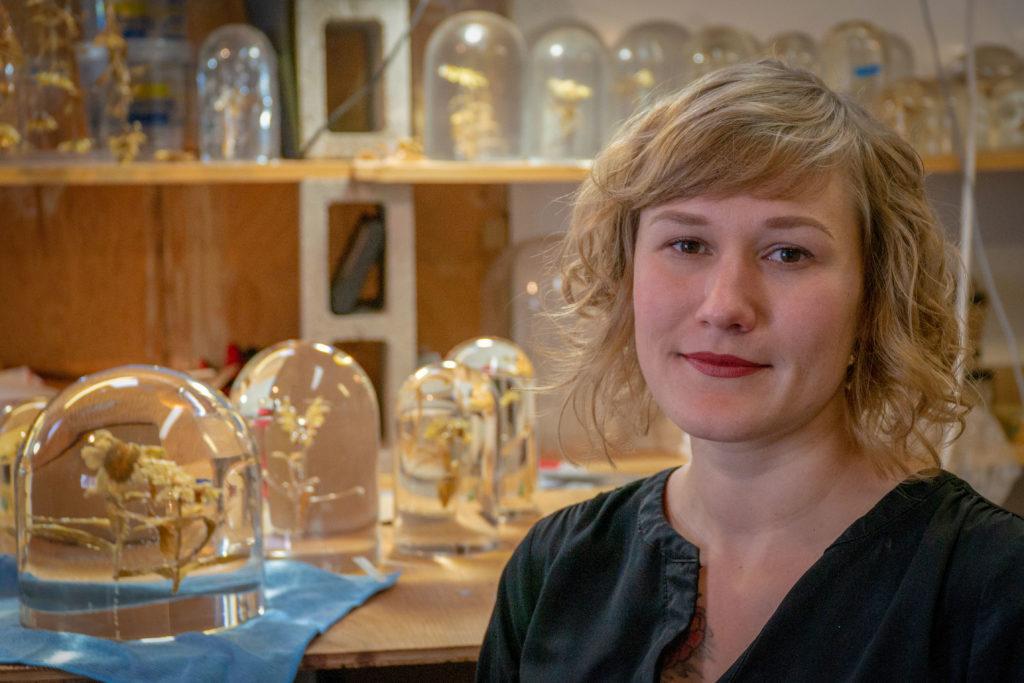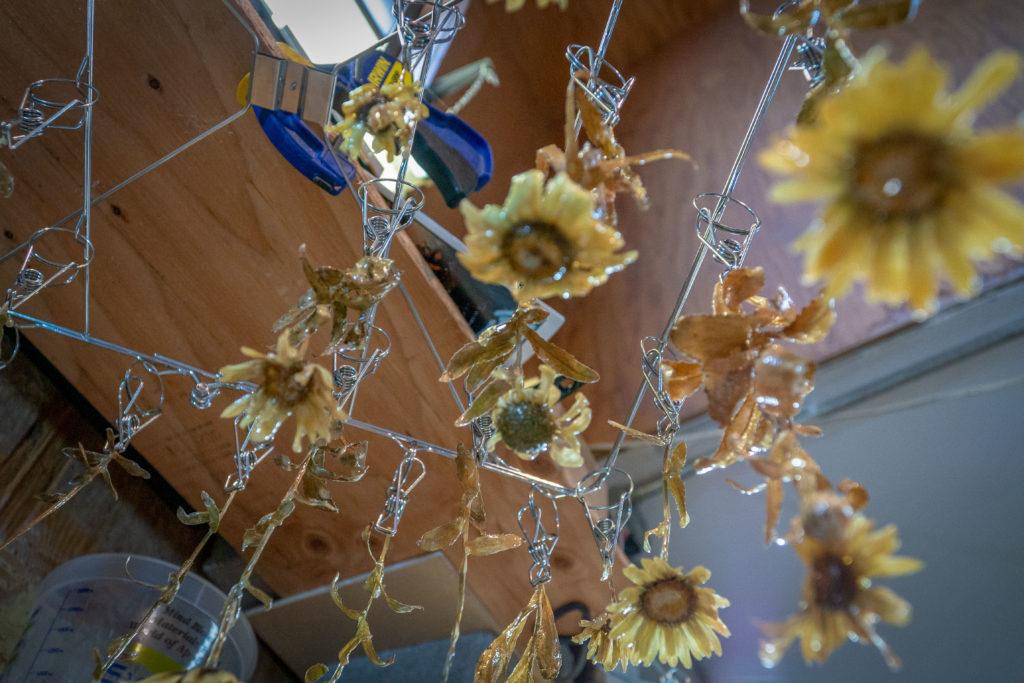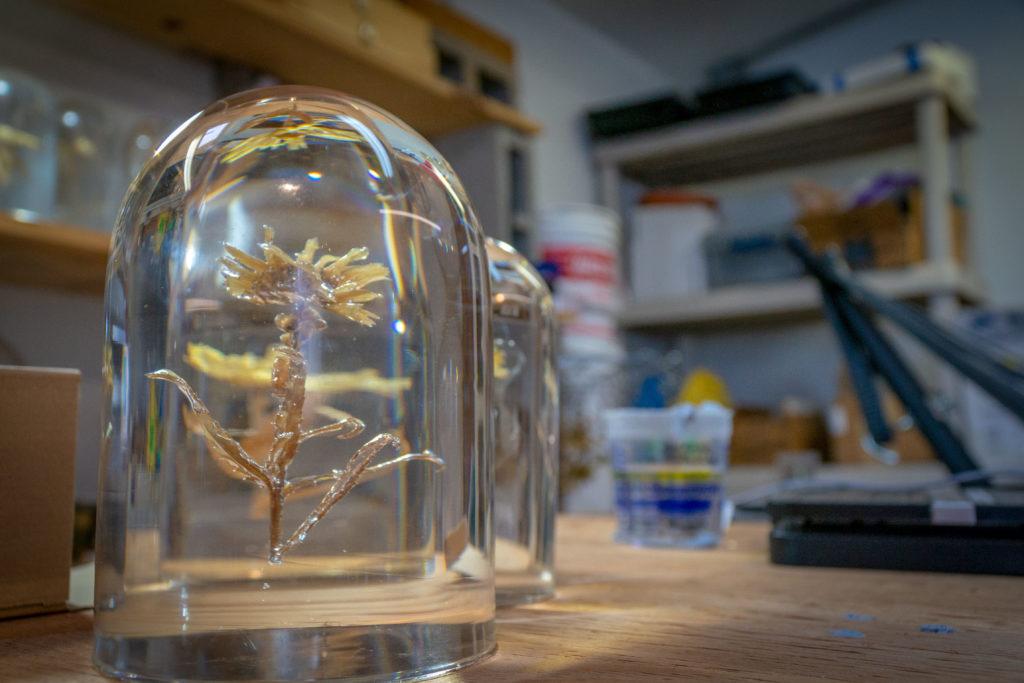
About six years ago, Megan Gafford swapped her paintbrushes for science. She still makes art, only now her tools of the trade are microscopes, petri dishes and, more recently, radiation. In fact, lately, she’s obsessed with radioactivity.
“We have a conjoined twin here,” Gafford said as she pointed out one of the daisies she grows in her studio. “There's two blossoms connected.”
It’s like having double vision. Two flower heads are growing from the same stem. Another daisy has a center that’s been stretched, “a shape that kind of feels like a caterpillar where the petals are like the legs of the caterpillar.”
The dozens of daisies scattered around her studio are mutants, grown intentionally to be disfigured by exposing the seeds exposed to radiation. It’s all done for the sake of art.
Gafford likes to “use unsettling scientific materials” in her work.

“I try to find ways to make them beautiful so that my viewers have a complicated experience where the beauty is pulling them in and then the unsettling part is pushing them away,” she said.
Pushing them away because they’re uncomfortable — maybe even frightened.
“The pursuit of science is our strongest shot at finding the truth about reality,” Gafford said. “And just the fact that the pursuit of truth could upend everything and destroy us all is very painful,” Gafford said.
She has read about the history of the atomic age and the Manhattan Project, which produced the atom bomb, obsessively.
Gafford also thinks about her own impermanence a lot after she survived a “nasty motorcycle accident that almost took me out about seven years ago.”
“I lost my youthful sense of mortality and the possibility of being snuffed out in a moment is really unsettling,” she said.
Several years ago, she created a subatomic particle detector, or cloud chamber, accompanied by a video projection for a project called “Hormesis.”
In 2017, she produced “Subatomic Chorus,” an arrangement of five Geiger counters on pedestals. The machines, which she built with guidance, “chirp every time they detect nuclear radiation as if they were singing together in a choir. They draw attention to the invisible, subatomic world that impacts our DNA in ways scientists do not fully understand,” according to Gafford’s artist statement.
The genesis of the daisy project was the 2011 Fukushima disaster when a tsunami hit a nuclear power plant in Japan causing a meltdown and buildup of radioactive waste. Gafford was transfixed with photos of mutant daisies posted online after the incident.
“The daisy itself is a kind of symbol of childhood innocence,” Gafford said.
It also reminded her of a 1964 political ad for then-incumbent-president Lyndon Johnson, attacking his challenger Barry Goldwater. In it, a young girl counts daisy petals. As she approaches 10, an ominous voice takes over and continues the count to a nuclear weapon detonation.

It all got Gafford’s mind buzzing about “this symbol of childhood innocence kind of at the periphery of nuclear fear.”
She wanted to recreate that, “So I found a physicist who had helped me irradiate some seeds and I started growing my own mutants.”
The professional, whose name Gafford did not disclose, exposes the seeds to radiation with a machine used for treating cancer, “cranked up to a much higher setting than what any human would ever be exposed to. We had to take the safeties off.”
She takes the mutants daisies, once they bloom, and coats them with thin layers of epoxy, a type of resin, preserving their “lifelike shape.” After letting them dry out for weeks, she then encapsulates them inside an upside-down bell jar with another resin, which “kind of magnifies the daisies a little bit.”

The suspended sepia-tone daisies look larger than the ones that await their entombment, adding to the eeriness of the art.
Despite her fascination with radiation, this third series of works could be her last with the deadly invisible rays.
Gafford often looks to science fiction to gauge our anxieties, and shows like HBO’s Westworld have turned her gaze toward artificial intelligence. She’s started to experiment with cybernetics in her art.
“People are terrified about what makes us human and how can that be taken away from us as we make perhaps something more intelligent than ourselves,” she said.








